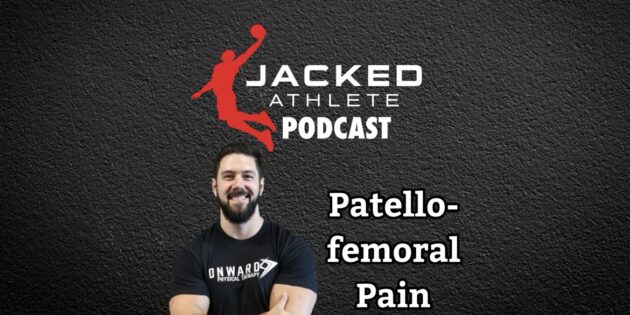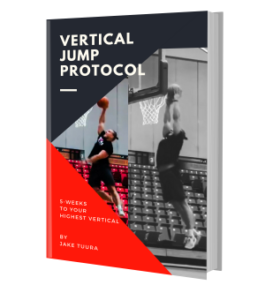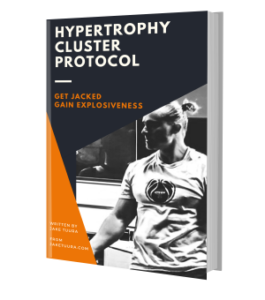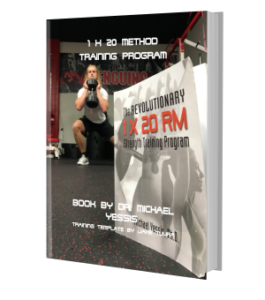Tearing the distal biceps tendon: “It hurt real bad for like three seconds. And I was like, Oh, we’re good.”
After Achilles surgery: “So went through the whole rehab process of that from surgery one for a year and a half, just rehabbing it, like really struggling with strength. Just like the push off ability of it. And I actually got a second opinion of my doctor and you know, he had a lot to say about what the first surgeon did being just not what you’re supposed to do from a conservative rehab protocol. And then I actually, how he did the surgery. So I did get a revision, which was a Z-plasty. He shortened my tendon to give me a better push off and that has made a huge difference.”
Rehab from the first Achilles surgery: “His rehab protocol was pretty conservative. Like I wasn’t walking at all for eight weeks. And then it was each week you kind of bring down the boot. Between five weeks between tear and surgery and then eight weeks of non-weight bearing. I mean, you’re talking months of just no load to the tendon and muscle. The amount of atrophy that happened is just crazy. So when I got back to doing rehab, I I think it was just, it was really cooked at that point, even with the surgery, you know, putting it back together, it just, all that downtime was not good for it.”
Physical therapy: “I can take someone through a really good progressive overloaded program and PR someone’s back squat. I could PR someone’s deadlift. Like if you can’t say that as a PT, that’s fricking tough, man. And unfortunately school, wouldn’t say set you up that great.”
Quad/Patellar Tendinopathy: “that’s a tissue injury.”
Patellofemoral Pain: “I use as thermostat analogy. If that knee is cold down at the bottom, it’s feeling great. It’s good. Now as the temperature goes up, we want to call that stress/volume/intensity… I look at it on the scale of okay, is that knee super hot or where they can’t walk without pain, they can’t do stairs without pain, or they can’t jump and run and sprint kind of thing. Like those are different irritability tests for me. Like how hot is this knee?”
“With rehab, we need to be on somewhere on that temperature gauge. And if it’s all the way at the bottom, nothing’s going to change. If we’re just doing TKEs and, lying positions, passive range of motion and we’re biking, it’s never going to get better… Or if we’re way overdosing that person, well, now they’re super hot. It’s just going to be more inflammatory and be not productive either. So I find that sweet spot and that’s a tough place to find without trial and error.”
PFP: “I think of it more as a system issue over a tissue specific issue (tendinopathy).”
“I do think tendon pain and patellofemoral pain, there is a lot of overlap or people having a little bit of both.”
“For a tendon, sometimes they’ll warm up. Patellofemoral pain doesn’t warm up as much. Typically, it gets worse and it really blows up right afterwards. Where a tendon might warm up and then that next morning or that night, it tells you.”
“I think there’s a lot of blend of the characteristics of both (tendinopathy and patellofemoral). And I think the treatment for it necessarily isn’t super different either.”
Pain with PFP: “sometimes it’s a little bit more elusive to where some people like Spanish squats, some people, it kills them… So it’s just trial and error.”
High irritability with patellofemoral loading: “That’s where I will lead into some manual therapy, whether it be to decompress the quad or dry needle, something to decompress that that knee a little bit to make it little more happy and then revisit that [loading].”
“The irritability is what I’m searching for… I know there’s some good scales out there (patellofemoral loading scale), I think that’s great biomechanically, but sometimes it just gets thrown in a loop for people so this scale isn’t perfect. Like, if I just start at the top, I’m good. And I work my way down generally. Yes. But some of those can be definitely flip flop for people.”
“Sometimes it’s really a volume thing. It takes time to start heating up.”
Tendon pain: “It can be super straightforward. There’s a clear issue, there’s a clear resolution to this (quad loading)… With patellofemoral pain, especially if it’s acute, we test the quad because, and if it’s not weak, it’s not the issue. So that’s where you kind of have to take a step back and ask what other levers can we pull on lifestyle, whether it be volume, whether it be nutrition or whatever.”
Patellofemoral pain: “I’ll say a lot of cases, for your average people, digging into someone’s diet and sleep is an easy factor.”
Patellofemoral taping: “It’s more like just to get by. Taping is a bandaid. No one wants their knee taped for the rest of their life. I don’t want them to rely on that. I don’t want them to think that’s the way out at all. So like it’s something I’m using pretty sparingly.”
“If you have a tendon issue and we do some ISOs in the right way, it’s going to feel better afterwards, like pretty quickly actually within that session. With patellofemoral pain, sometimes it just makes it worse. They’re sitting there in an ISO and they’re like my knee is starting to hurt more. I’m like, okay, let’s stop doing that.”
“It’s more of a system issue. So that just time under tension of a two minute wall sit or whatever, for patellofemoral pain is just cranking that thermometer up. The time of the tension is super high now. And it doesn’t like that.”
“If you have knee pain, like how fast can get you to do an extension? Just like with a low back, how fast can I get you to do a deadlift?”
“With squatting, we’re probably going to a box first, like 95 % of the time.”
“The irritability scale. I mean, that’s how I look at really like anybody’s pain. Like that’s where my starting point is.”
“Even a college athlete, if they’re eating like shit in the cafe and sleeping three hours a night and staying up like, dude, your knees not getting better.”
“For 95 % of the people I’m seeing, which is your normal humans that are crossfitting or running or playing recreational sports or whatever, those lifestyle factors can be a huge disconnect. People just don’t think about those things.”
“Presenting the why protein is important to build structure in their body is something I think someone can kind of be pretty neutral on and coming from the place of like, I just want you to feel better…. hey, like my body’s made of protein, I obviously need more protein for it to build. Oh, that just makes sense. So it’s easy for people to digest that.”
“In physical therapy school, I think strength conditioning as a principle of education should be at least 10 times bigger than it is, at least where my university was. Like if you, if you’re going to PT school and you’re not a runner, an athlete, you’re not exercising some capacity. I’m like, I don’t really don’t understand.”
Colby on Instagram: https://www.instagram.com/drcolby_dpt/?hl=en
Onward Tampa on Instagram: https://www.instagram.com/onward_tampa/?hl=en
Onward Tampa: https://onwardphysicaltherapy.com/tampa/



